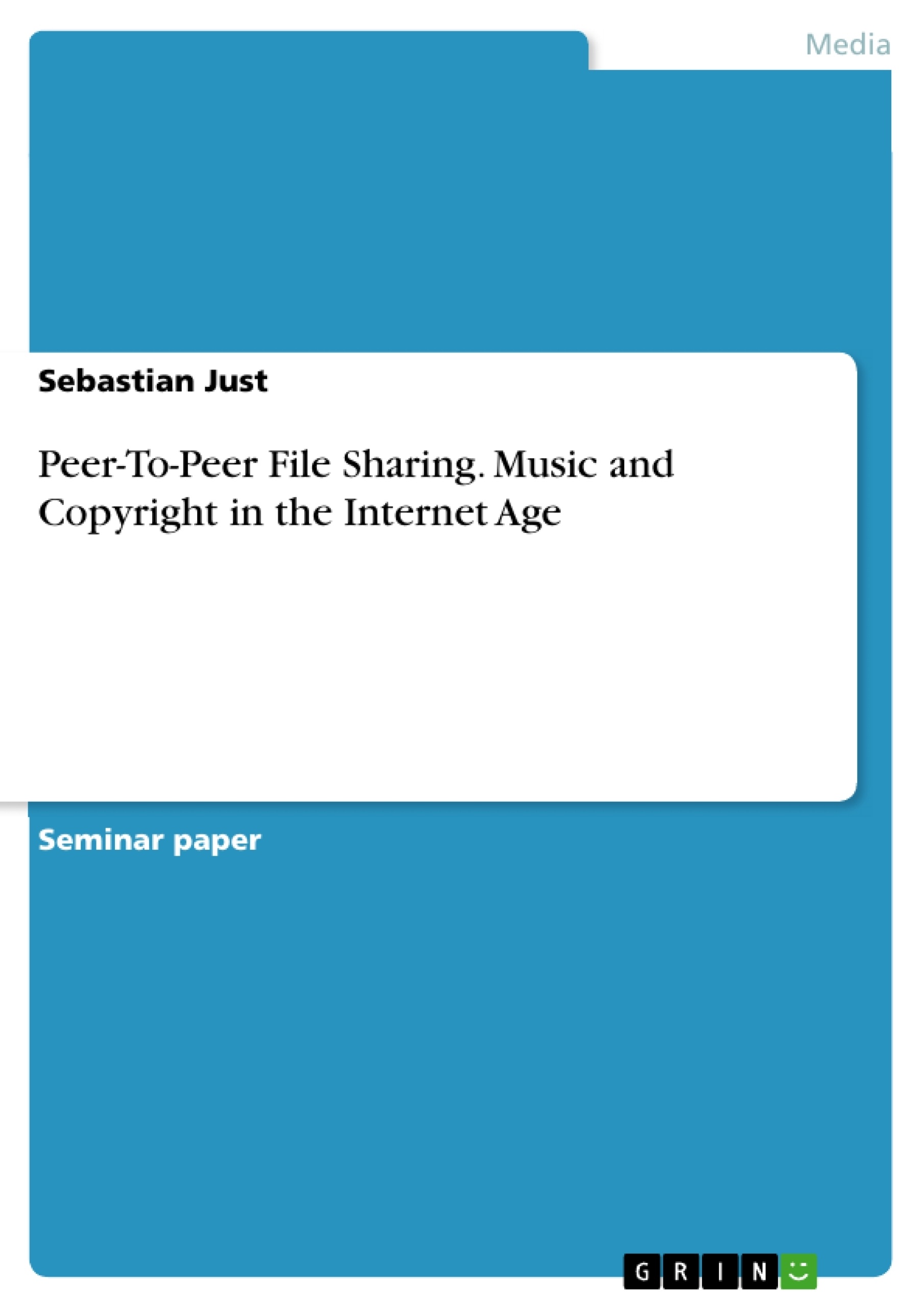The objective of this paper is to take a closer look at the development and behavior of Peer-to-Peer based file sharing networks while especially considering intellectual property law to assess the impact this disruptive technology had on the music industry. To do that this paper will first look at the shift from analogue to digital audio, which entailed significant changes for both the music industry and the consumer. Then it will focus on the first real Peer-to-Peer file sharing network "Napster", especially on why it came into being, how it worked and to what extend it interfered with copyright law. Afterwards it takes the period after "Napster's" shutdown in 2001 in consideration, in which various new Peer-to-Peer networks even more copyright-resistant emerged. It will be examined how these networks functioned compared to their predecessor, how the music industry and the state tried to take on these “digital enemies” and how Peer-to-Peer affected the music business. Eventually we will take a look at how the industry managed to adapt to the internet, treating it as a profitable platform rather than a dystopian technology.
On the 3rd of April 1993, the World Wide Web was made available to the public. By connecting people all over the world, this technological milestone initiated drastic changes to how we are able to consume visual and acoustical entertainment. In 1999, the first ever file sharing network called "Napster" launched and illicitly enabled users to exchange copyrighted music for free. This was accomplished by using a peer-to-peer system, which takes advantage of the vast availability of the internet and the resultant high number of “peers”. Users register to the network and declare which files from their computer they are willing to share, enabling others to download the files directly from them rather than through a central sever. This sort of file transfer posed a challenge for the music industry, as their music was made publicly available with no one paying for it. In addition, Peer-to-Peer systems conflicted with the idea of intellectual property, which grants an author certain rights over his or her work in form of a copyright.
Table of Contents
- Introduction
- The loss of scarcity
- Napster: the P2P-pioneer
- Motivation
- Structure
- Shutdown
- P2P through the 2000s
- Decentralization
- Legal war
- Aftermath
- The new music industry
- Conclusion
Objectives and Key Themes
This paper examines the development and behavior of P2P based file sharing networks, specifically focusing on the impact of this technology on the music industry in light of intellectual property law. The paper explores the transition from analogue to digital audio, the rise of Napster, the emergence of new P2P networks, and the music industry's adaptation to the internet age.
- The evolution of peer-to-peer (P2P) file sharing networks
- The impact of P2P technology on intellectual property rights, particularly copyright
- The response of the music industry to the rise of P2P file sharing
- The adaptation of the music industry to the digital era
- The changing dynamics of music distribution and consumption in the internet age
Chapter Summaries
- Introduction: This chapter introduces the concept of P2P file sharing and its impact on the music industry, highlighting the tension between copyright and the accessibility of music through digital platforms.
- The loss of scarcity: This chapter explores the shift from analogue to digital audio, emphasizing the loss of control over music distribution for the music industry and the emergence of new challenges to copyright protection.
- Napster: the P2P-pioneer: This chapter examines the rise of Napster, the first major P2P file sharing network, discussing its motivation, structure, and eventual shutdown due to copyright infringement issues.
- P2P through the 2000s: This chapter explores the development of P2P file sharing networks after Napster's demise, focusing on the emergence of more decentralized and copyright-resistant systems, the legal battles that ensued, and the aftermath of these legal challenges.
Keywords
This paper explores the intersection of intellectual property, particularly copyright, with the emergence of P2P file sharing networks, and their impact on the music industry. Key terms and concepts include: peer-to-peer (P2P) technology, file sharing, music piracy, copyright law, digital distribution, music industry, digital transformation, Napster, and the internet age.
- Quote paper
- Sebastian Just (Author), 2020, Peer-To-Peer File Sharing. Music and Copyright in the Internet Age, Munich, GRIN Verlag, https://www.grin.com/document/1323708



